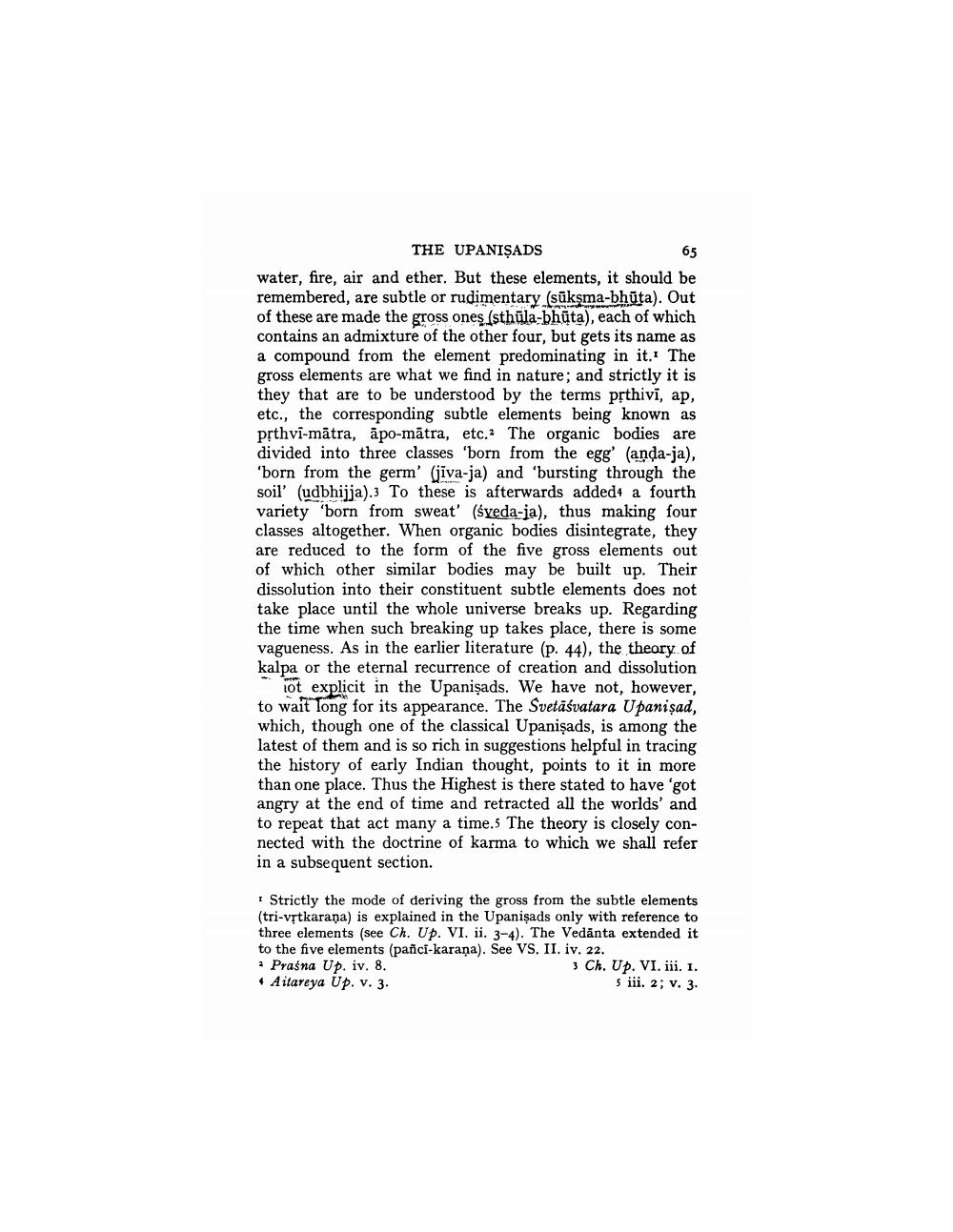________________
THE UPANISADS water, fire, air and ether. But these elements, it should be remembered, are subtle or rudimentary (sūkşma-bhūta). Out of these are made the gross ones (sthūla-bhūta), each of which contains an admixture of the other four, but gets its name as a compound from the element predominating in it. The gross elements are what we find in nature, and strictly it is they that are to be understood by the terms přthivi, ap, etc., the corresponding subtle elements being known as prthvi-mātra, apo-mātra, etc. The organic bodies are divided into three classes 'born from the egg' (anda-ja), "born from the germ' (jiva-ja) and 'bursting through the soil' (udbhijja).3 To these is afterwards added4 a fourth variety 'born from sweat' (sveda-ja), thus making four classes altogether. When organic bodies disintegrate, they are reduced to the form of the five gross elements out of which other similar bodies may be built up. Their dissolution into their constituent subtle elements does not take place until the whole universe breaks up. Regarding the time when such breaking up takes place, there is some vagueness. As in the earlier literature (p. 44), the theory of kalpa or the eternal recurrence of creation and dissolution
iot explicit in the Upanisads. We have not, however, to wait long for its appearance. The Svetāśvatara Upanişad, which, though one of the classical Upanişads, is among the latest of them and is so rich in suggestions helpful in tracing the history of early Indian thought, points to it in more than one place. Thus the Highest is there stated to have got angry at the end of time and retracted all the worlds' and to repeat that act many a time. The theory is closely connected with the doctrine of karma to which we shall refer in a subsequent section.
Strictly the mode of deriving the gross from the subtle elements (tri-vrtkarana) is explained in the Upanişads only with reference to three elements (see Ch. Up. VI. ii. 3-4). The Vedānta extended it to the five elements (pañci-karaña). See VS. II. iv. 22. * Praśna Up. iv. 8.
3 Ch. Up. VI. ii. 1. • Aitareya Up. v. 3.
5 iii. 2; v. 3




